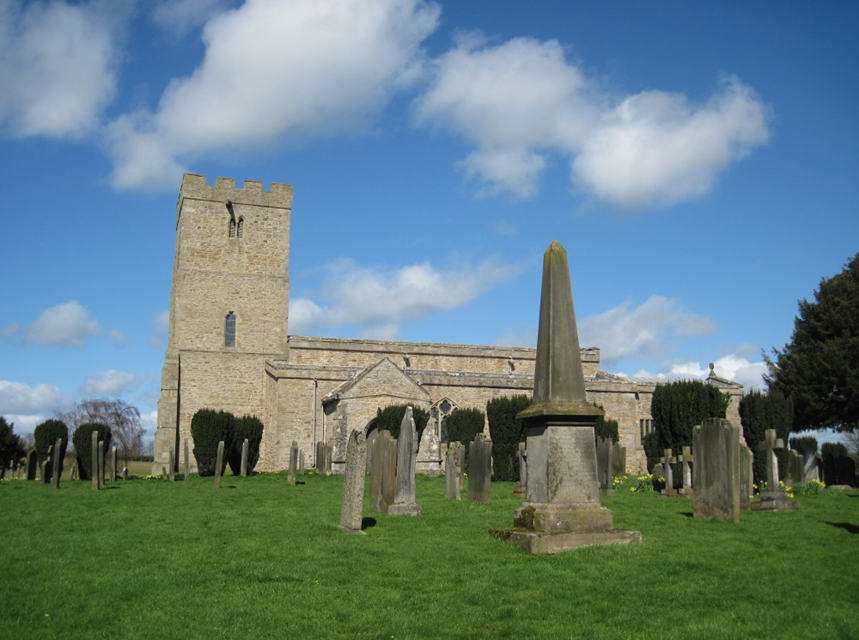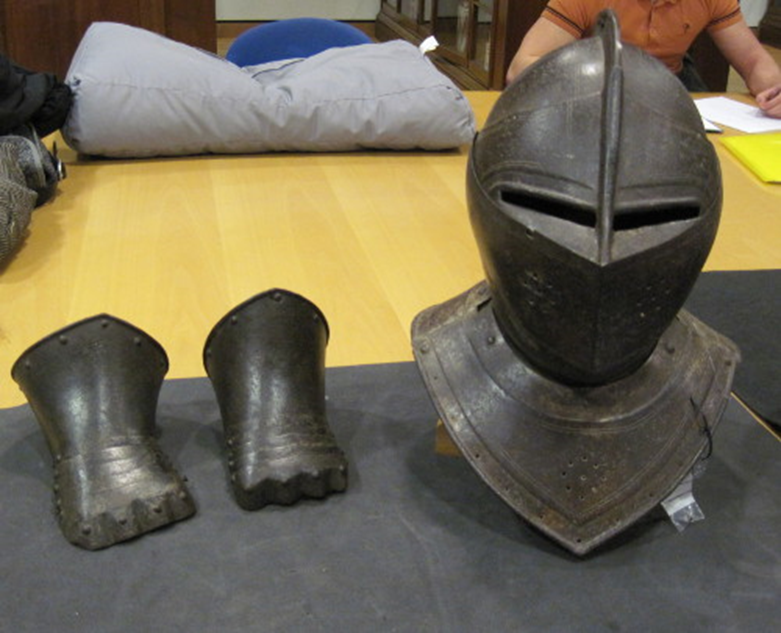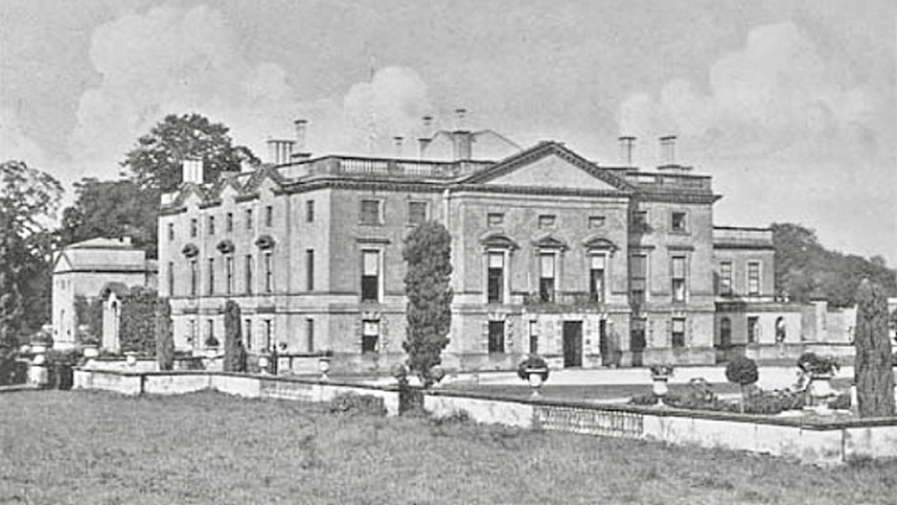STANWICK IRON AGE FORTIFICATIONS
The features now visible at Stanwick are the excavated remains of only a small part of an Iron Age rampart and ditch that encloses an area of 310 hectares (766 acres) and is nearly 6.5 kilometres (4 miles) long.

Excavations were conducted by the celebrated archaeologist Sir Mortimer Wheeler in the 1950s and the remains were left uncovered and partly reconstructed to show their original appearance. From these excavations Wheeler was able to date the rampart to the 1st century AD.
The ditch was cut into the bedrock and the ramparts were reinforced with a retaining stone wall. It is thought that this wall ran around the full circuit of the outer rampart. It would have been a most impressive sight, and its construction would have required an enormous workforce.

THE BRIGANTES
The ability to command such a force lay with the powerful local ruling class of the Brigantes who controlled much of northern Britain when the Romans arrived in AD 43. In exchange for their independence their queen, Cartimandua, agreed to co-operate with the Romans. The treaties were not accepted by the whole tribe, however, and a power struggle between the different factions followed.
The Brigantes’ occupation of Stanwick was concentrated on the area known as the Tofts, to the south of the church of St John the Baptist. Ramparts were built around the original settlement. Excavation here has revealed timber roundhouses and other structures dating from the middle of the 1st century AD.
Pottery and other finds show that during the reign of Cartimandua, the Brigantes at Stanwick enjoyed access to luxury goods imported from other areas of the Roman Empire. Excavated items include amphora jars for storing wine, ceramics from southern France and the Rhineland and German and Italian glass.
As the site developed rapidly into an important trading post and a major centre of Brigantian power, the ramparts were extended. Although Stanwick flourished for several decades during the 1st century, it declined in importance after AD 70 when Roman power and influence expanded northwards.
The present form of the earthworks owes much to landscaping carried out in the 18th century by the owners of Stanwick Hall and Forcett Hall.
St John’s Church

The site occupied by the church of St John the Baptist, Stanwick has been a sacred place since long before the present church was built. It is situated within the ancient Brigantean fortress now known as Stanwick Camp and it may have been a religious site before it became a Christian place of worship. The circular churchyard (though a section has been cut off by the road) indicates a pre-Conquest burial ground and the outline of a Saxon church has been found near to the present church. There are also several Saxon and Viking remains including a cross shaft, and other carvings which have simply been used as ordinary building stones in the walls.
The present building has substantial parts that can be dated to C13 (tower, main doorway, east window of south aisle) and a number of old grave slabs have been incorporated into the porch indicating details (though not the names) about the persons whose graves they covered. Several of these indicate that the church was in the control of the Knights Templar at one time. The fact that there are so many stone grave slabs here is not so much an indication of the wealth of the area as the fact that stone from local quarries was so readily available.
From C14 to C17 Stanwick was owned by the Catterick family but in 1638 it was conveyed to a Smithson grandson. In the church is a splendid monument to the first of the several Hugh Smithsons and his wife, Dorothy. On the wall not quite above the Smithson tomb is a helmet and gauntlets, the funeral sign of a knight with military connections. Hugh was a Royalist during the Civil War and may have fought in Charles' army. The original helmet and gauntlets were made in the 1630's. Those in the church are replicas made in about 2010, the originals being in the Royal Armories in Leeds. It is not known whether this armour was worn by Sir Hugh or was acquired to hang in the church. The gauntlets obviously came from different pairs as they are both for the left hand.

The great grandson of the Hugh Smithson commemorated in marble, married Elizabeth Seymour, heiress to the Earldom of Northumberland, took the historic Northumberland 'Percy' family name and became Earl of Northumberland. His illegitimate son left his fortune to be used to establish the Smithsonian Institute in Washington DC. The Percy family as Earls, and later Dukes, of Northumberland held the Stanwick estate until the 1920s when the estate was broken up.
From 1865 to 1911 Stanwick was ruled by Eleanor, dowager duchess Northumberland and it was she who had the church restored by Anthony Salvin in 1868. Like many Victorian restorations, Salvin's at Stanwick rather overdid it and many old features were lost as a result but the C19 font, still has a C17 cover (much restored) and several memorials and hatchments were retained. Since 1990 St John's has been in the care of the Churches Conservation Trust though the church yard still belongs to the parish.
Stanwick Hall
Built from 1739, for Hugh Percy (1714-1786), 1st Duke of Northumberland, as an alternative home to his family's ancient ancestral seat, Alnwick Castle. In time it became the house into which the Dowager Duchess' were moved when their sons succeeded to Alnwick. The original architect is unknown but is thought to have worked closely with Percy, a patron of the arts known also for Syon House. Before it was demolished in 1923, some of its interiors were salvaged and retrofitted elsewhere. William Randolph Hearst purchased at least one of the rooms and among the houses considered to have other Stanwick rooms are Clayton on Long Island; The Grange in Toronto; an unspecified office in Manhattan; and, the Minneapolis Institute of Arts....

Various improvements were carried out from 1870 by the 4th Dowager Duchess including the addition of the Italian garden by Salvin. Her greenhouses gained some renown in producing exotic fruits otherwise unheard of such as bananas, peaches, grapes, figs and nectarines. She died here in 1911 and the house was converted into a hospital a few laters for the duration of World War I. The war ended in the same year that the 7th Duke died and facing crippling death duties the estate was sold and the house was demolished.